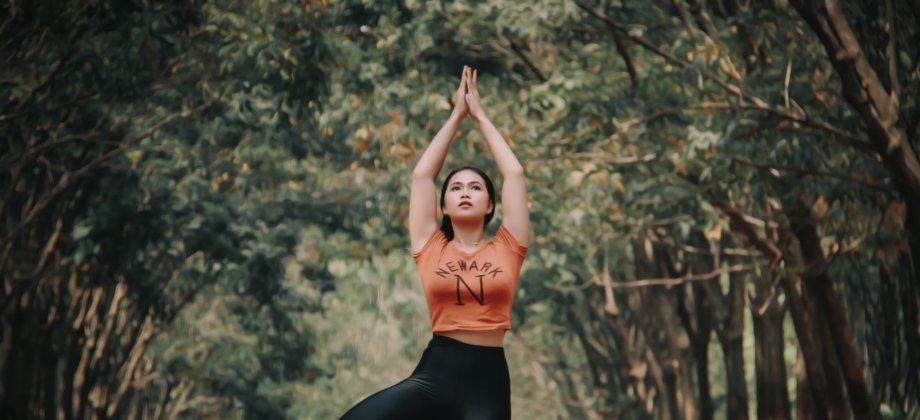
How to Set Up Boundaries at the Beginning of your Yoga Teaching Career
You’re a new yoga teacher dying to get out there and share your practice and gain as much experience as possible. Everyone around you is saying the same thing: ‘Teach as much as you can, wherever you can!’ And while this seems daunting, you know it’s the best way to grow to be confident and competent in your teaching. I totally agree with this, experience is the ONLY way to try out all those teaching methods you’ve just learnt, discover which ones work for you and just get comfortable guiding a room full of people through their practice. But this doesn’t mean you have to say yes to every opportunity that presents itself to you, regardless of what it might be costing you, financially and energetically.
I’ve put together a few things worth considering when you get offered something you feel like you shouldn’t refuse, and how to work out if it’s the right one for you.
Is it paid or will it lead to paid work?
We all hate bringing money into the conversation, but if we’re trying to build a career out of teaching, then we have to make sure we’re setting ourselves up to pay the inevitable costs of living. And that’s okay, it doesn’t mean you’re not being authentic to your practice. So, if a studio is asking you to teach a community class for free, find out more about what it could lead to and make your decision from there. Do you have the spare time to plan and teach the class? Will they consider you as a cover teacher? How much would those classes pay? Could this potentially lead to a regular class?
Don’t be shy about getting the full scope of the offer first because even though we love what we do, we still gotta pay those bills.
But as teachers, it’s important to understand and respect the ancient history of the practice and the place it started.
What are they actually asking for?
I had an experience recently where I was booked on to teach a free community class and if the class got good reviews from students, I’d be added to the studio’s cover list. The class was on a Sunday evening, a ten-minute walk from my house and after consideration, definitely worth taking on. However, a few days before I was due to teach this class, they asked if I would be able to come to the studio two hours before the start time and work at the reception desk in order to ‘get to know my yogis’. Now, in my experience as both a teacher and a yogi, it is very unlikely any yogi is turning up two hours early to a yoga class and the best time to get to know each other is usually during the hour or so we have on the mat together. So essentially, they were asking for two hours of free labour, in addition to the sixty-minute class, I was already teaching for no pay. Suddenly, this opportunity was taking much more time and energy than a freelance yoga teacher living in London could easily give up.
Karma Yogi roles are a winner!
Karma yogi roles are very popular among yoga studios and great for new yoga teachers in many ways. This is often as simple as setting up the studio space, signing yogis in for the class and then taking the class for free, and in some studios, will include free membership. This is a great way to keep up personal practice, get involved with the community at the studio, learn more about running a space and experience lots of new teaching styles. Most studios will have their own version of this, so take a look at those local to you and see if they have anything set up. Even if they don’t, it’s always worth reaching out to ask if you could help out!

Know their voice and be true to yours
Yoga is more than asana. Yoga is meditation, it’s a philosophy; an internal awareness and external connection that can guide the way you lead your life. These days the term yoga conjures images of Power Vinyasa flow and Rocket classes where people in figure-hugging leggings perform acrobatic movements to Bonobo. We love this. But as teachers, it’s important to understand and respect the ancient history of the practice and the place it started.
A good starting point is to work out which parts of yoga philosophy have stood out for you and started working their way into your daily life. From there, the teachings you want to share and feel comfortable sharing might become clearer. Once you start gathering an idea of this (it might take some time and be ever-shifting!) it makes sense to find studios that think similarly or at least ones that will give you the freedom to share with authenticity. You don’t want to end up being asked to end every session with ‘Namaste’, if you’ve decided this isn’t something you want to include in your sessions.
Start by being honest with yourself and this will lead to being honest with those around you, yogis and employers alike!
Final Thoughts
Starting a new career can be a minefield and especially when you’re doing something you’re passionate about, it’s easy to enter into dynamics that aren’t always beneficial to you because you feel so lucky to be doing something you love. Doing something you love every day and sharing it with others is the most amazing feeling, but the only way to continue this love affair is to keep the relationship healthy, and that means making sure you’re looking after yourself and not always putting your own needs on the back burner. As soon as you’re clear on what you can realistically take on, you’ll attract opportunities that reflect this and allow yourself to be the best yoga teacher you can be!






